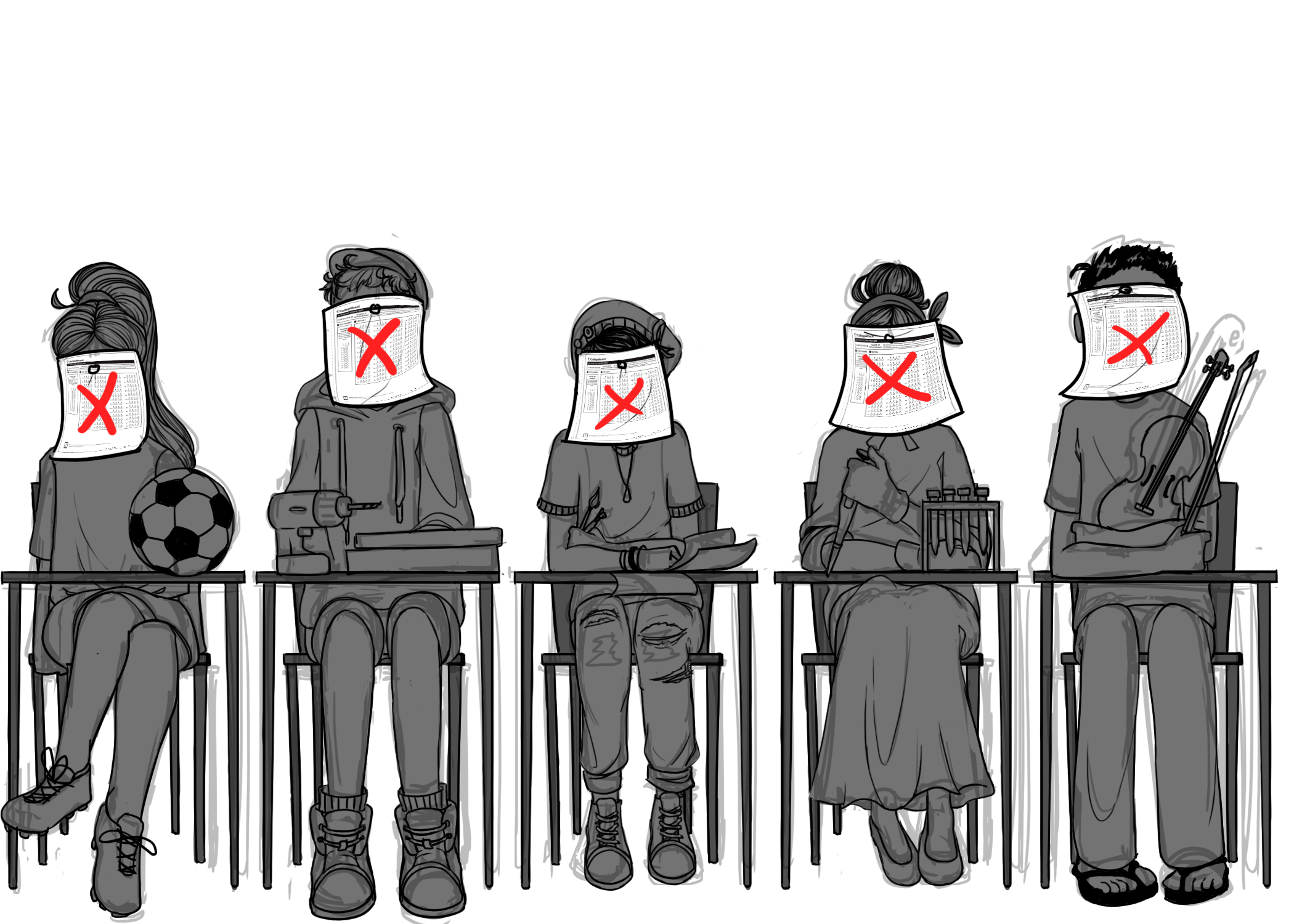[et_pb_section admin_label=”section”]
[et_pb_row admin_label=”row”]
[et_pb_column type=”4_4″][et_pb_text admin_label=”Text”]One Saturday morning in November, I woke up earlier than usual. I was used to waking up early by then, as every day that month I had groggily forced myself to get out of bed to take a proctored practice SAT. But on that Saturday morning, tingling nerves filling my stomach as I struggled to finish my eggs and toast. After a half hour car ride, I joined countless others also taking the SAT, teens who could likely relate to my nerves and restlessness.
Since August, standardized tests have been consuming my time and energy. Instead of pursuing other activities or passions, I have spent weeks and weekends in tutoring and self-studying to improve a number that has grown to hold more significance in my life than it should. Although more colleges and universities are beginning to place less weight on testing, society nonetheless uses test scores to define and compare students.
Similar to many others, I have always struggled with testing. I did not like the format it provided; the multiple choice tests that require less than one minute on each question for some sections reminded me of a race. Instead of focusing on answering each question, I was rushing to finish the section. Every year when STAR tests rolled around in elementary and middle school, I dreaded the seated hours of bubbling and the boredom that accompanied them.
Although I am signed up to take another standardized test and will continue studying, the impacts of the coronavirus pandemic on testing could influence the admissions process permanently. Perhaps for the better, colleges will recognize that the capabilities of students can be extrapolated from the many other factors in the admissions process, instead of a deeply flawed test.
After my test, I became accustomed to hearing the common phrase “What did you get?” asked by both people I knew well and people I hardly knew. A seemingly personal and not very important number has become public and sometimes shameful for me. Even at a school like Nueva, where grades do not represent a student’s success but rather a checkpoint of one’s progress, conversations around standardized test scores still occur. One should never be embarrassed about their score, but somehow I have felt shame when confronted with this question.
These tests do not measure a student’s intelligence, but merely prove if one has the adequate resources to learn the tricks to beat the system, which include access to workbooks, tutoring, other testing materials, and time to study. A study analysis conducted in 2019 found that the gap between demographic group and SAT score grew even larger in 2019, as the “average SAT scores of students from historically disenfranchised groups fell further behind their classmates from more privileged families.”
The SAT was initially created in 1926 as a way to test knowledge at the time for admission into colleges. Ironically, it was designed with the intention to “help those who came from more humble backgrounds to be noticed by prestigious schools.” But it is impossible to assess each individual’s overall ability using a single measurement, given the inevitable differences between students.
Recently, after two months of intensive studying for the March SAT, I was mentally prepared for the four hour test, although part of me was dreading taking it a second time. The day before my test, it was canceled due to the COVID-19 outbreak, one of 150 test sites either postponed or canceled that day. (The postponed date for my test was also canceled shortly after.)
Initially, I was bombarded with feelings of frustration, as I had studied tirelessly and it seemed to have all gone to waste. Then I discovered that some colleges, including the University of California, are recognizing the disruption to testing, and even beginning to suspend test scores as part of the application for the Class of 2021. If the majority of colleges employ test-optional policies, institutions could potentially realize that testing is not necessary for admission and extend these policies into the future.
Illustration by Alyssa L.[/et_pb_text][/et_pb_column]
[/et_pb_row]
[/et_pb_section]


Leave a Reply